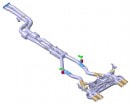After teaching us all about the brake system and the new steering in the 2015 BMW M3 and M4, the M division decided to also go over the exhaust system, trying to let us know exactly what to expect.
In this regard, they talked to Mr. Rainer Drees, the man responsible for the acoustic characteristics of M automobiles. The in-depth article covers both what the driver is hearing and what the people outside will perceive.
When they set out to design both the exhaust and the sound of the new M cars, the engineers knew that they had to follow the patterns set by the models that came before them. One of the key objectives that had to be achieved was instant recognition. All M cars can be instantly recognized by their sound, according to Mr. Drees. Therefore, the M3 and M4 had to fall in the same pattern.
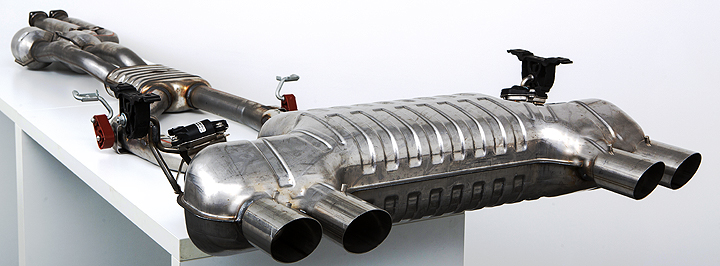
However, while they could’ve made the S55 engine sound extremely loud (and some of the Bimmerheads out there would’ve loved it), they also had to take into account the fact that the car will be used on an everyday basis and had to be livable with. Therefore a compromise had to be reached.
Another interesting fact to be taken into account was that the new engine was now turbocharged, moving away from the traditional naturally aspirated versions. That means the sound would turn out to be different too.
If on NA engines, the exhaust tract is virtually unhindered by anything from the admission all the way back to the mufflers, on a turbo unit you have the turbochargers interfering on the way. That means that if on the former type of engine you get to enjoy the entire rang of the acoustic frequency spectrum on the latter you get only parts of it.
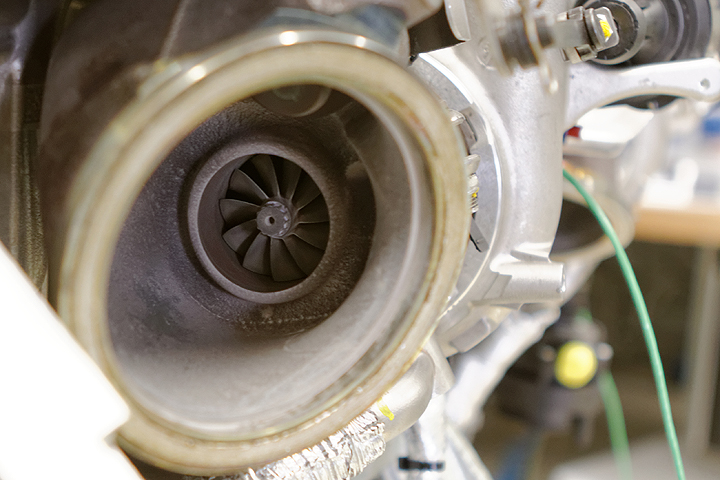
For most drivers, the sound of the engine will tell them when to switch gear, without looking at the speedometer. That means that the sound has to be perfectly audible and in tune with what’s hard at work under the bonnet. Since turbos take away some of the acoustic range, a solution had to be created.
While some other manufacturers went for solutions that involved installing a ‘shaker’ (a kind of mechanical actuator that can be used to transmit vibrations into the body) BMW went a bit further.
Their system restores the sound that is actually produced by the engine but not heard in the cockpit. By doing so, the driver knows exactly how to handle its power and how much it actually has at its disposal.
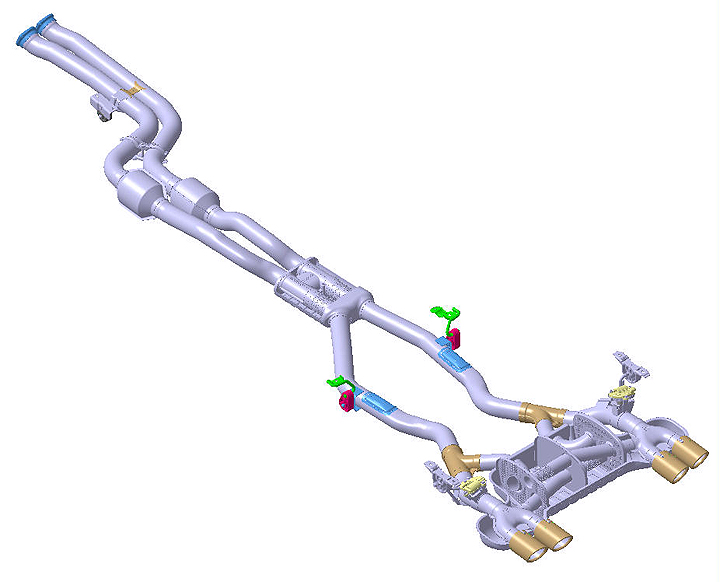
Other challenges also occurred on the way. The exhaust had to also be extremely light and have the lowest possible counterpressure. That drove the engineers to create the first compact rear silencer that has enough space for two electrically adjustable exhaust valves just before the silencer itself.
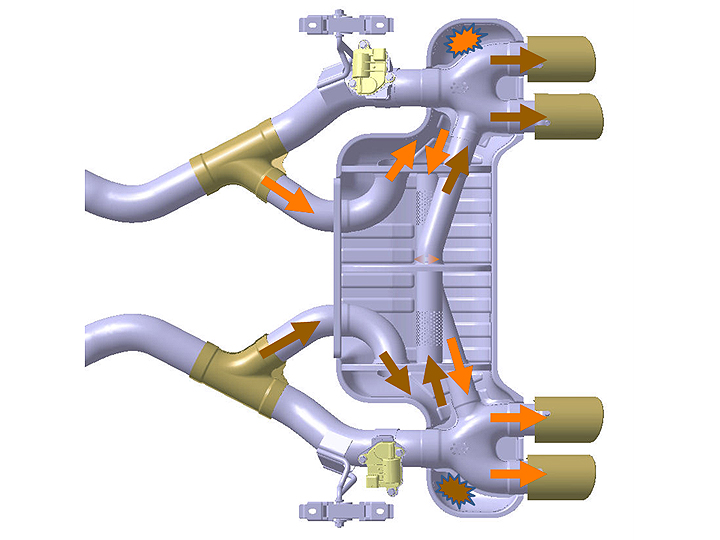
When the exhaust valves are closed, the gas branches off into a reflection chamber in the rear silencer. From the reflection chamber, the exhaust gas passes once right through the rear silencer to the tail pipes located on the opposite side. Hence the damping is primarily produced by artificially extending the length of the exhaust pipe, accompanied by absorption.
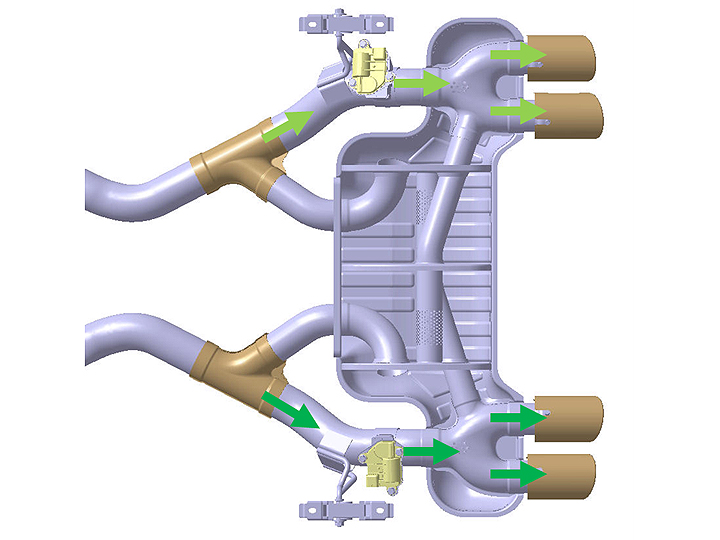
When the valves are open, there’s basically no damping at all and the fumes exit directly through the tail pipes, creating an external sound that is worthy of an M3 and M4.
As far as the M Performance Exhaust System goes, the same design was used. However, this exhaust is made of titanium and therefore is lighter and offers a different acoustic.
When they set out to design both the exhaust and the sound of the new M cars, the engineers knew that they had to follow the patterns set by the models that came before them. One of the key objectives that had to be achieved was instant recognition. All M cars can be instantly recognized by their sound, according to Mr. Drees. Therefore, the M3 and M4 had to fall in the same pattern.

However, while they could’ve made the S55 engine sound extremely loud (and some of the Bimmerheads out there would’ve loved it), they also had to take into account the fact that the car will be used on an everyday basis and had to be livable with. Therefore a compromise had to be reached.
Another interesting fact to be taken into account was that the new engine was now turbocharged, moving away from the traditional naturally aspirated versions. That means the sound would turn out to be different too.
If on NA engines, the exhaust tract is virtually unhindered by anything from the admission all the way back to the mufflers, on a turbo unit you have the turbochargers interfering on the way. That means that if on the former type of engine you get to enjoy the entire rang of the acoustic frequency spectrum on the latter you get only parts of it.

For most drivers, the sound of the engine will tell them when to switch gear, without looking at the speedometer. That means that the sound has to be perfectly audible and in tune with what’s hard at work under the bonnet. Since turbos take away some of the acoustic range, a solution had to be created.
While some other manufacturers went for solutions that involved installing a ‘shaker’ (a kind of mechanical actuator that can be used to transmit vibrations into the body) BMW went a bit further.
Their system restores the sound that is actually produced by the engine but not heard in the cockpit. By doing so, the driver knows exactly how to handle its power and how much it actually has at its disposal.

Other challenges also occurred on the way. The exhaust had to also be extremely light and have the lowest possible counterpressure. That drove the engineers to create the first compact rear silencer that has enough space for two electrically adjustable exhaust valves just before the silencer itself.

When the exhaust valves are closed, the gas branches off into a reflection chamber in the rear silencer. From the reflection chamber, the exhaust gas passes once right through the rear silencer to the tail pipes located on the opposite side. Hence the damping is primarily produced by artificially extending the length of the exhaust pipe, accompanied by absorption.

When the valves are open, there’s basically no damping at all and the fumes exit directly through the tail pipes, creating an external sound that is worthy of an M3 and M4.
As far as the M Performance Exhaust System goes, the same design was used. However, this exhaust is made of titanium and therefore is lighter and offers a different acoustic.

